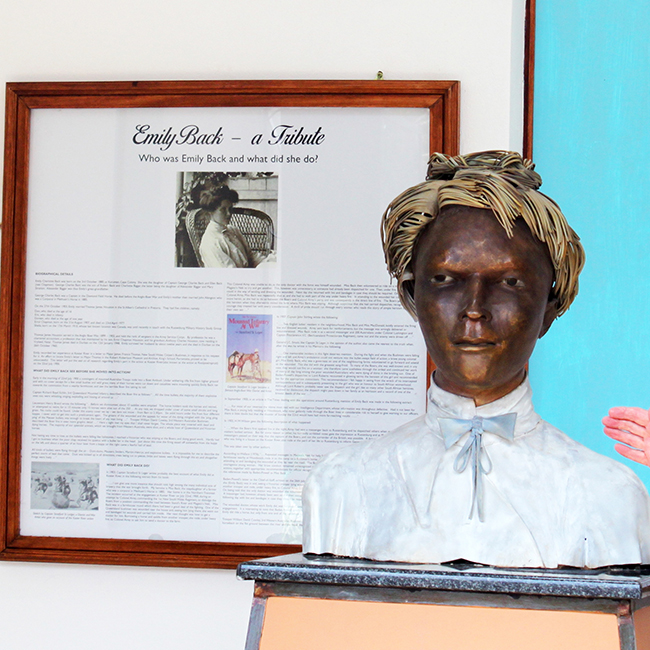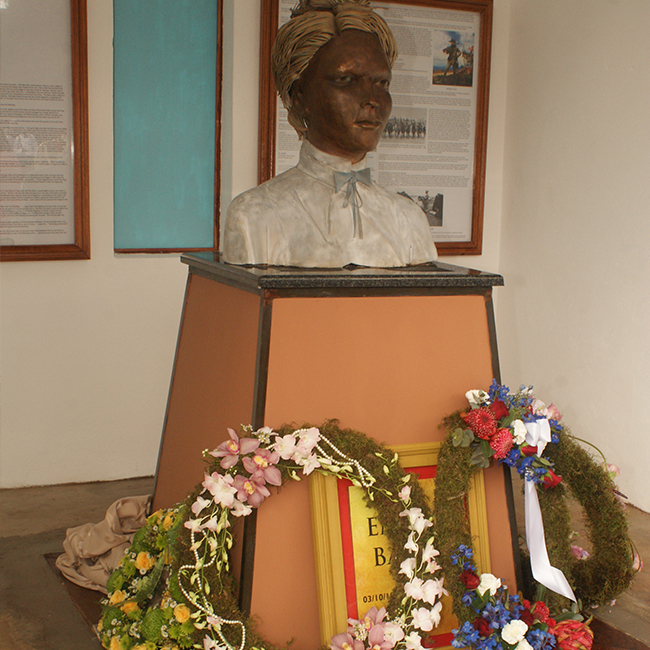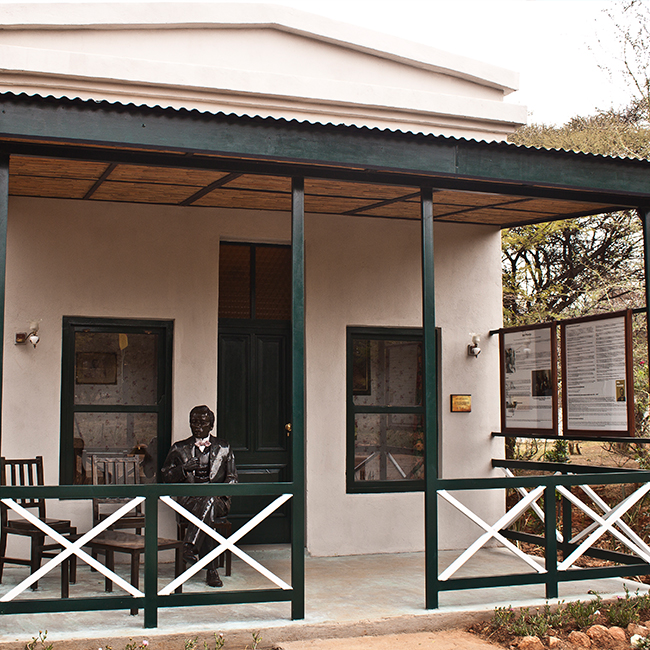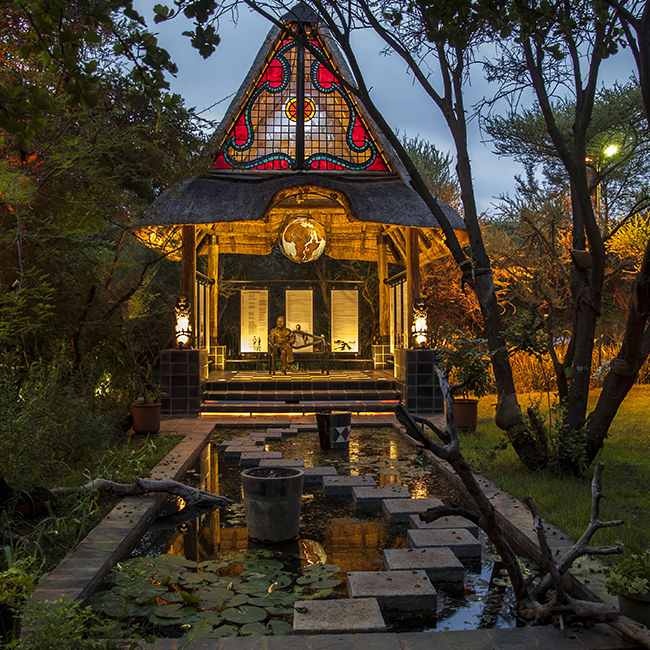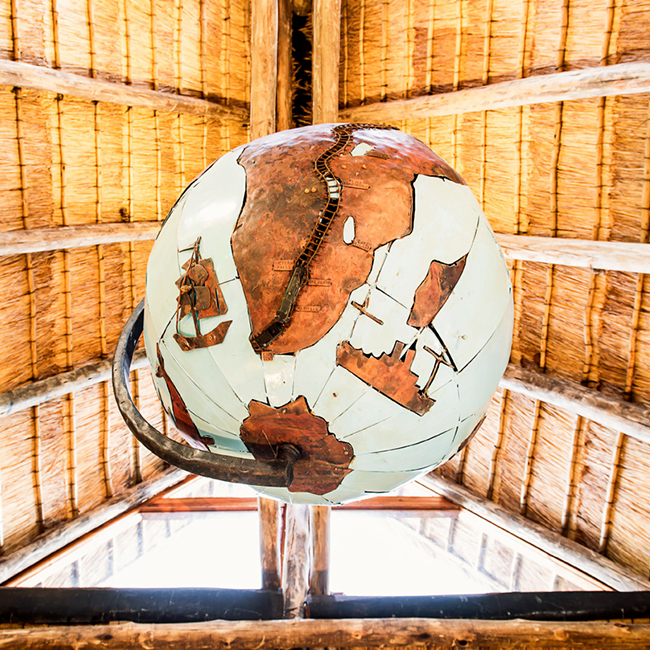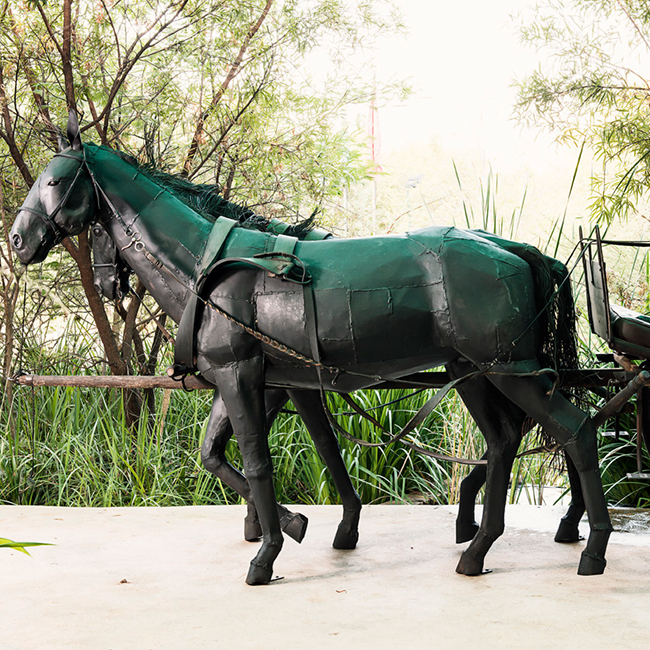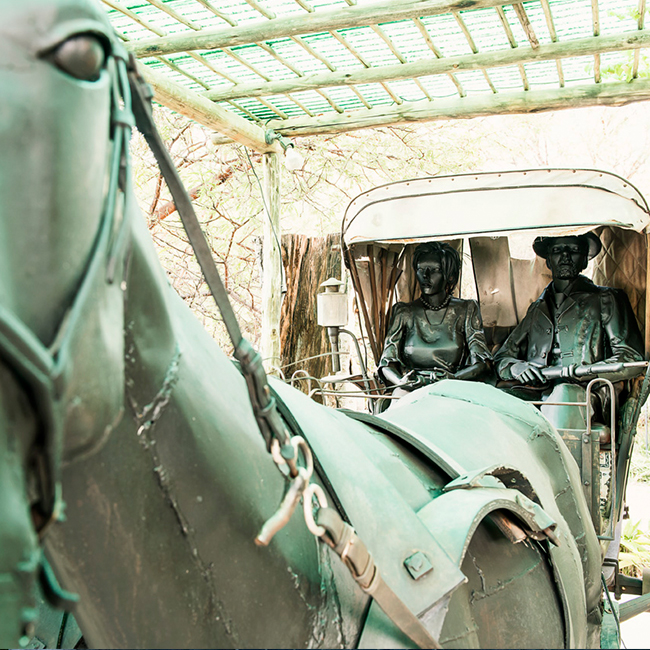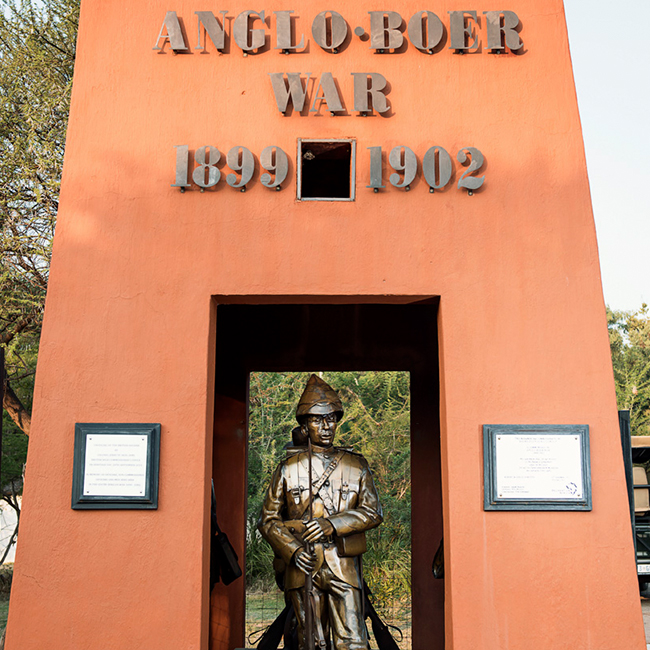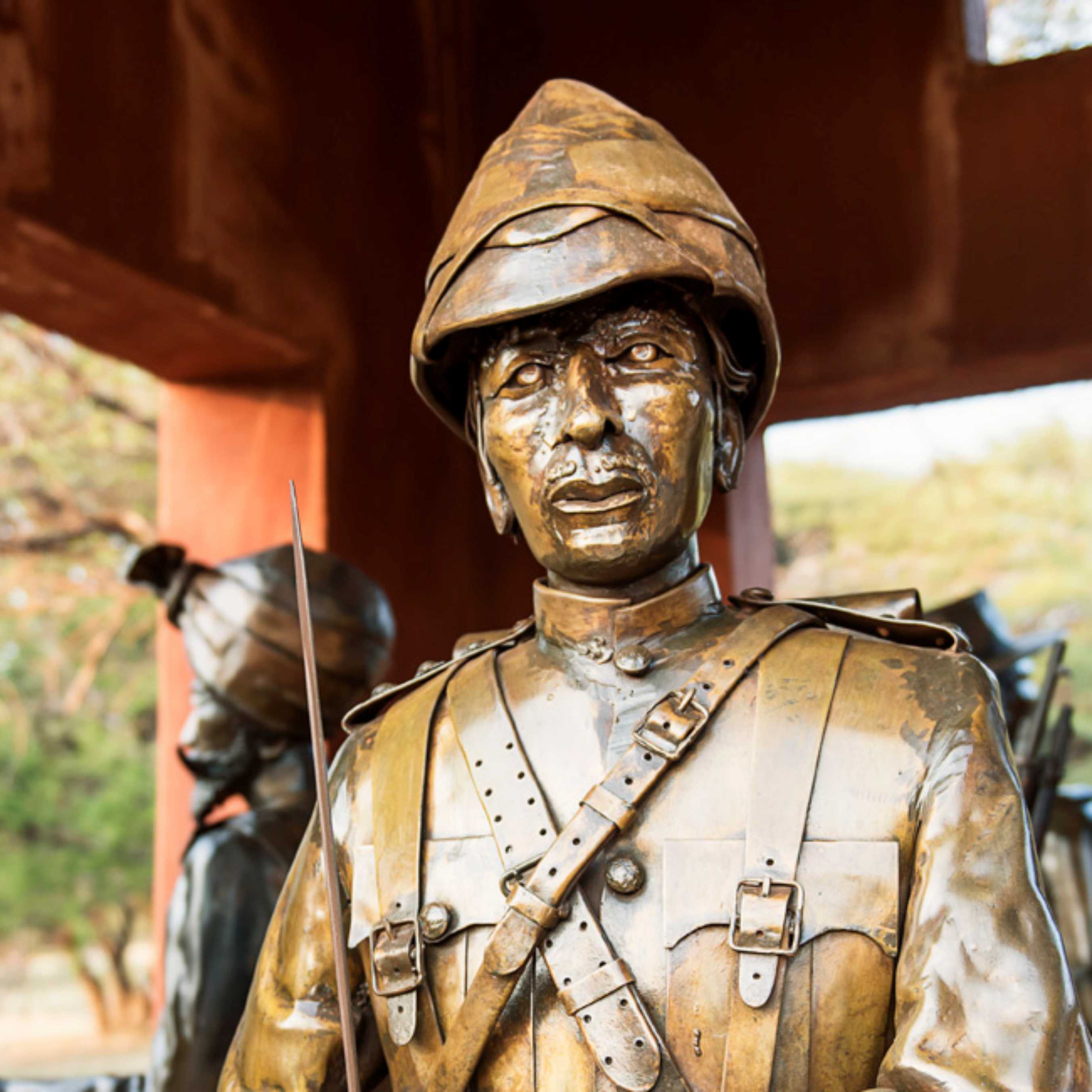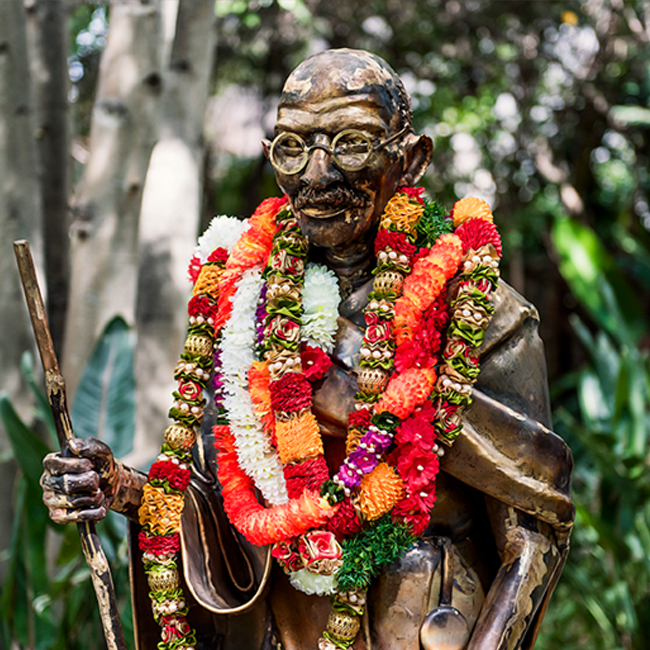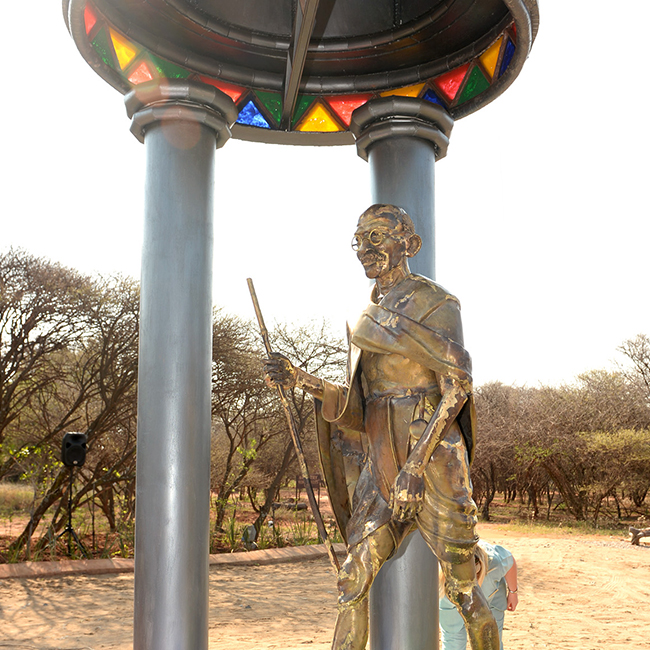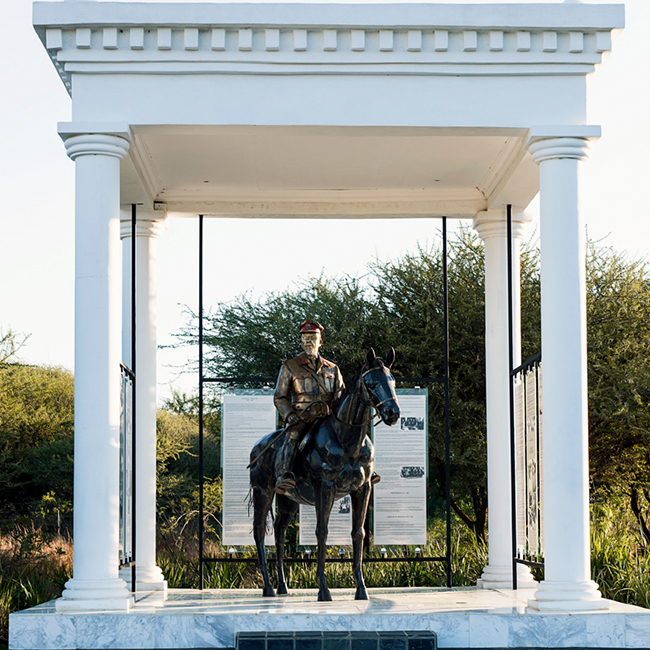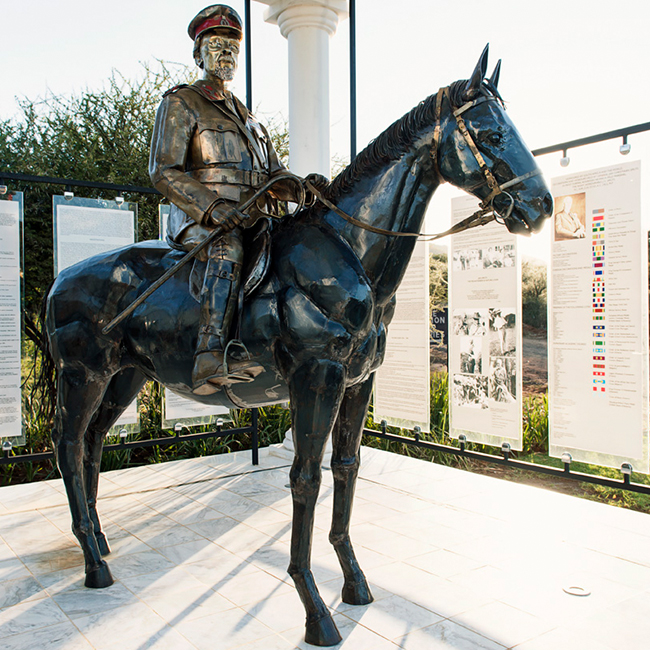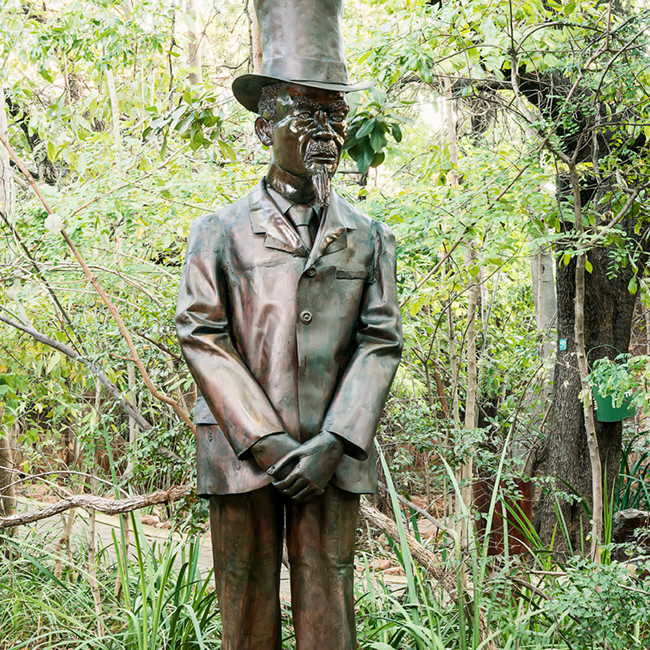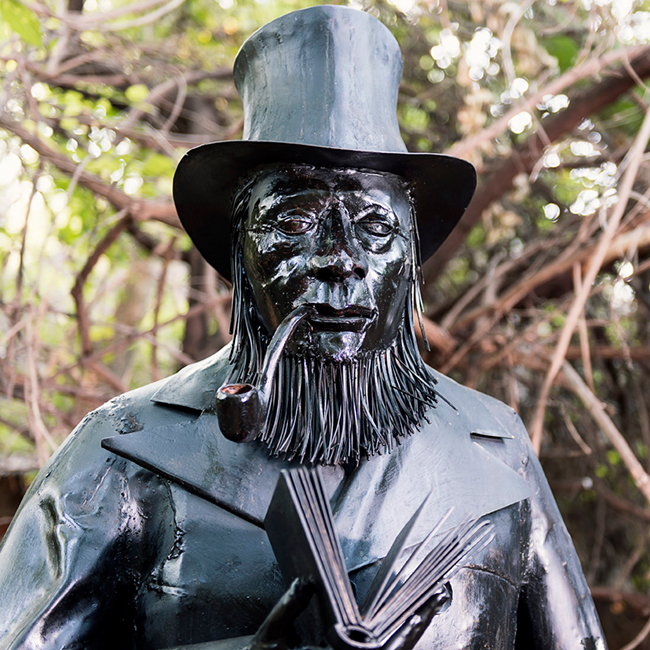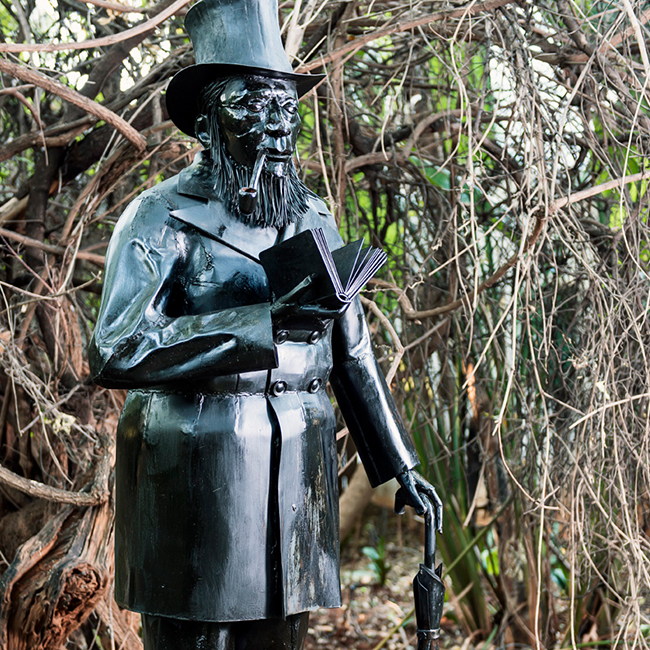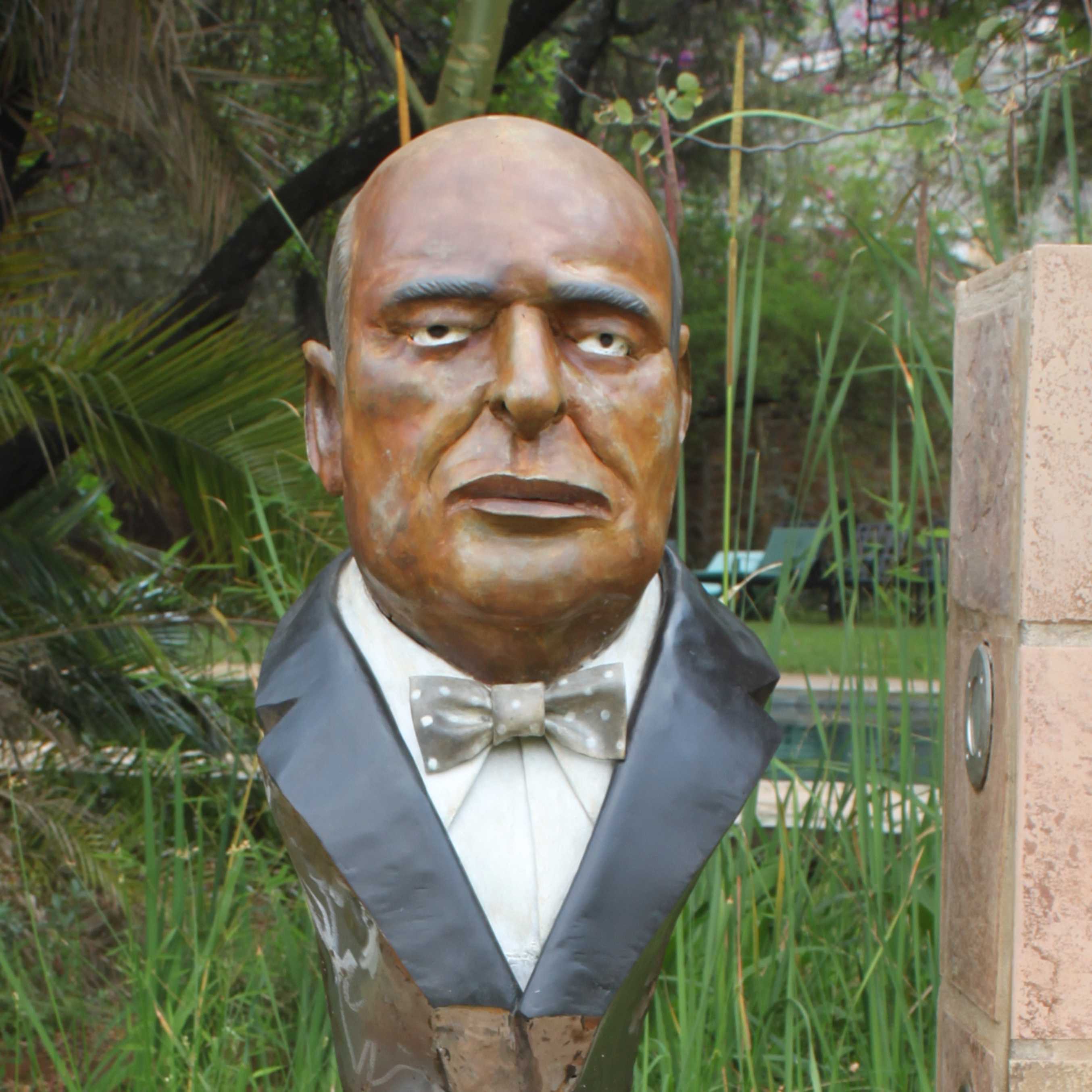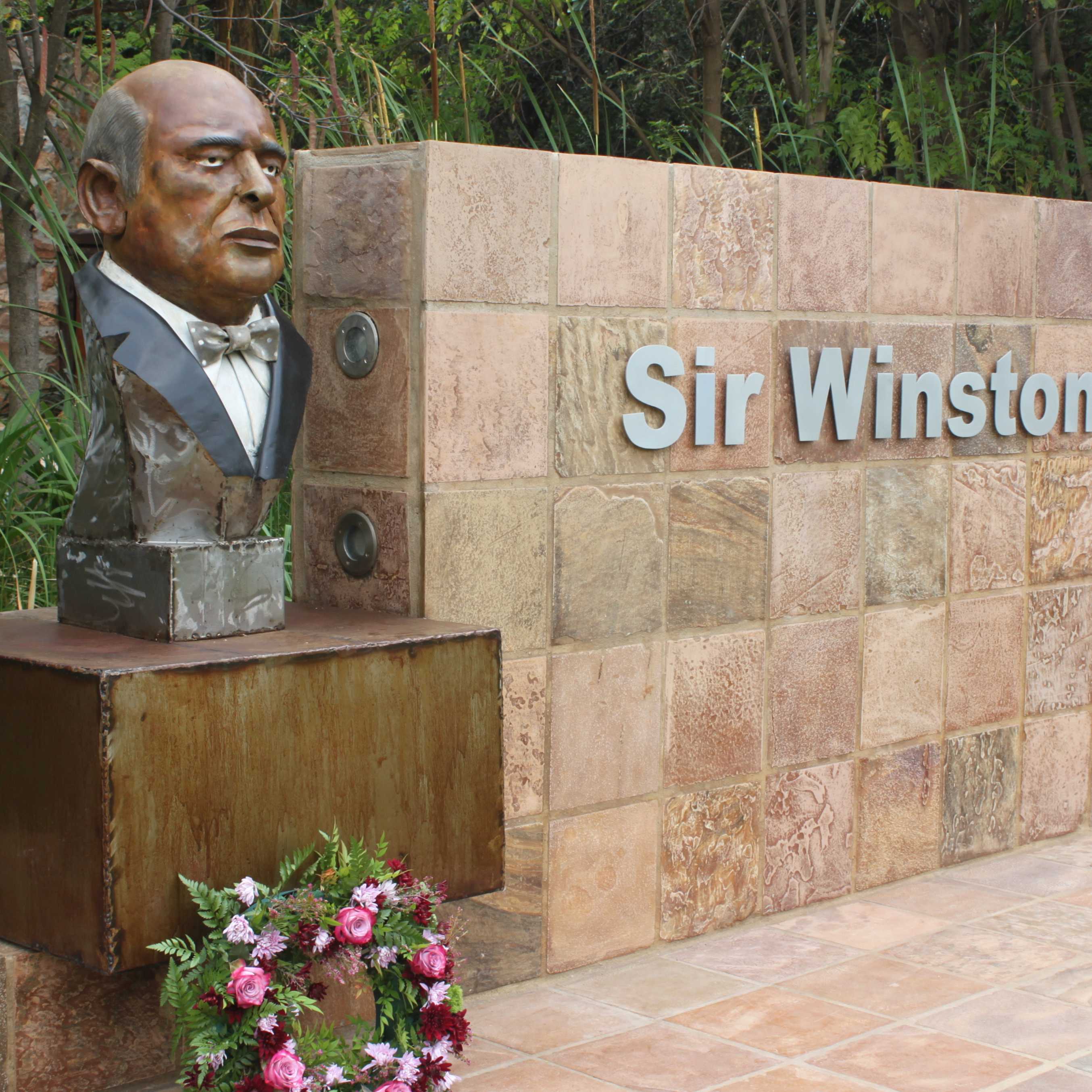Introduction to Memorials at Kedar
Upon entering the gates at Kedar Heritage Lodge, on the left-hand side, you will see a bust of one of the Bafokeng kings. Once you have driven in, you will see a dam in the centre of which stands a life-size bronze sculpture of an elephant. Both of these artworks symbolise our past heritage. This was the area where the famous Henry Hartley hunted some of his first elephants, and where the Bafokeng carved out their kingdom. At the entrance to the lodge reception is a sculpture of a Tswana warrior, leaping off a rock This is a memorial to the Bafokeng nation which, together with the Afrikaner, fought off the advances of King Mzilikazi, the founder of the Matabele nation.
Each memorial features an impressive detailed sculpture of the personality it honours. All the sculptures are the work of renowned sculptor, Adam Madebe. Adam Madebe was born in Bulawayo, Zimbabwe, in 1954 and currently lives and works in Johannesburg. He has had a long career in the arts and is now widely considered to be Zimbabwe's most famous indigenous sculptor in metal, winning many awards for his works, including the notable President’s Award for Excellence in 1994.
Adam’s sculptures, which are often life-size or larger, are part of prestigious collections across the world with some of his works such as his Fallen Warrior, shown at the British Museum, still used as case studies for fine art students in Zimbabwe today. He won a succession of major prizes in national exhibitions and has received commissions for a number of important public sculptures in Zimbabwe, South Africa and Botswana, including a monumental set of three workers displayed at Construction House, Harare, completed in 1992 and a tribute to miners located at Krugersdorp, completed in 2005.
The subject of an educational television programme made for BBC’s Channel 4, he is known primarily for his figurative work, but has also achieved great acclaim for his semi-figurative and conceptual work such as 'Hot Seat' (1989). This and other works by Adam were shown at the Contemporary African Art Fair in Somerset House in London in October 2015.
The memorials are dedicated to the following personalities:
Emily Back
Emily Charlotte Back was born on the 3rd October, 1880, at Kuruman, Cape Colony. On the battlefield at Koster River, on 22nd July 1900, under severe Boer rifle fire and with complete disregard for her own safety, Emily Back tended to the needs of the wounded Australian soldiers.
Her act was so impressive that General J.C. Smuts wrote in his Memoirs the following:
“…One memorable incident in this fight deserves mention. During the fight and when the Bushmen were falling right and left and Airey’s ambulance could not venture into the bullet-swept field of action, a brave young colonial girl, Miss Emily Back, who was a governess on one of the neighbouring farms, volunteered to go forward and attend to the wounded This she did with the greatest sang-froid. To many of the Boers, she was well-known and, in any case, they would not fire on a woman: she therefore came scatheless through the ordeal and continued her work of mercy all day long among the poor wounded Australians who were dying of thirst in the broiling sun. One of Baden-Powell’s despatches to Lord Roberts recounted in glowing terms the heroism of this girl and recommended her for the appropriate distinctions. This recommendation I felt happy in saving from the wreck of his intercepted correspondence and in subsequently presenting to the girl who was an honour to South African womanhood. Although Lord Roberts probably never saw the dispatch and the girl, like so many other South African heroines, received no distinction, the dispatch might pass down in her family as an heirloom and a record of one of the bravest deeds of the war …..”
Sol Plaatje
Solomon Tshekisho Plaatje was born on 9 October 1876 in the Boshof district of the Orange Free State. His parents were Christians who belonged to the Setswana-speaking Barolong tribe. About the time he was born, his parents moved to the Pniel mission station of the Lutheran Berlin Mission Society, near Barkly West, and it was there that Plaatje received his only formal education, a few years in the elementary grades. He remained at Pniel for several years as an assistant teacher, studying further with the aid of the missionaries. In 1894 he went to Kimberley, where he found work as a postman, continued his private studies, and eventually distinguished himself on the civil service examinations.
On the eve of the South African war, he was sent to Mafeking as an interpreter, and during the siege of Mafeking in 1899 - 1900 he acted as both court interpreter and clerk to the Mafeking administrator of Native affairs. The Mafeking Diary of Sol Plaatje is a noteworthy piece of history as it represents the only written account of the siege from a black South African perspective. He was proficient in at least eight languages, including German and Dutch, as well as English and all the major South African languages.
Cecil John Rhodes
Cecil John Rhodes (5 July 1853 – 26 March 1902) was a British businessman, mining magnate and politician in Southern Africa who served as Prime Minister of the Cape Colony from 1890 to 1896. An ardent believer in British imperialism, Rhodes and his British South Africa Company founded the Southern African territory of Rhodesia (now Zimbabwe and Zambia), which the company named after him in 1895. South Africa's Rhodes University is also named after him. Rhodes set up the provisions of the Rhodes Scholarship, which is funded by his estate, and put much effort towards his vision of a Cape to Cairo Railway through British territory.
The son of a vicar, Rhodes grew up in Bishop's Stortford, Hertfordshire. He was a sickly child and was sent to South Africa by his family when he was 17 years old in the hope that the climate might improve his health. He entered the diamond trade at Kimberley in 1871, when he was 18, and over the next two decades gained near-complete domination of the world diamond market. His De Beers diamond company, formed in 1888, retains its prominence into the 21st century. Rhodes entered the Cape Parliament in 1880, and a decade later became Prime Minister. After overseeing the formation of Rhodesia during the early 1890s, he was forced to resign as Prime Minister in 1896 after the disastrous Jameson Raid, an unauthorised attack on Paul Kruger's South African Republic (or Transvaal). After Rhodes' death in 1902, at the age of 48, he was buried in the Matopos Hills in what is now Zimbabwe. At the time of his death he was already a very controversial figure.
Women’s Memorial
Interestingly, women also played significant roles in the South African War, including taking up arms in some instances. This fact is not ignored at Kedar; indeed, displayed in a prominent location, in the forecourt of the lodge reception, a memorial acknowledges the crucial role played by women in general, but particularly Boer women. Boer women have always formed an integral and sometimes even central part of the historiography of the South African War, especially during the scorched earth days and after the war itself, when they had to hold the family together, after having lost homes and livelihoods, as well as loved ones.
From the time of the Great Trek, during which they had at times exercised a decisive influence, Boer woman had not only shared many vicissitudes of the establishment and early history of the republics, but had on occasion, actually been in the forefront of events. Women ameliorated the harshness of pioneering conditions, played a leading role in educating their children, and their support or incitement of their men during times of political crisis was often decisive. Their influence was grounded in their position as the focal points of tightly-knit, often large, family units.
The outbreak of war in October 1899 immediately disrupted most of these family units. Boer women, as they had in the past campaigns, assumed control of the farms as the men were called up for commando duty. They despised cowards and shirkers, induced their men to join the fighting forces and often compelled burghers on furlough to return to the front. They assisted the Boer commissariat, nursed the wounded, and later the sick, in concentration camps, and organised relief for indigents. Despite the pleas of some Boer women to be armed and to be allowed to fight, there was no widespread active female participation in the conflict, although there were isolated instances of women who were caught up in hostilities.
Soldiers’ Memorial
The South African War has been described as a “white man’s war” with many people choosing to focus on the British and Boer men who fought in this war. This is quite unfortunate and deceiving as the war involved many other groups of people. At Kedar, sharing a more holistic picture of this history is something we are passionate about.
Therefore, we have erected (seen as one drives into the grounds of the lodge) a monument which is essentially a collection of statues that acknowledge the different ethnicities of some of the men who fought in the South African War. Apart from a Boer and a British soldier, there is also an Indian and a Black soldier in the display.
Mahatma Gandhi
Mahatma Mohandas Karamchand Gandhi (2 October 1869 – 30 January 1948) was an Indian activist who was the leader of the Indian independence movement against British rule. Employing non-violent civil disobedience, Gandhi led India to independence and inspired movements for civil rights and freedom across the world.
During the South African War, Gandhi volunteered in 1900 to form a group of stretcher-bearers as the Natal Indian Ambulance Corps. According to Arthur Herman, Gandhi wanted to disprove the imperial British stereotype that Hindus were not fit for "manly" activities involving danger and exertion, unlike the Muslim "martial races". Gandhi raised eleven hundred Indian volunteers, to support British combat troops against the Boers. They were trained and medically certified to serve on the front lines. They were auxiliaries to a white volunteer ambulance corps at the Battle of Colenso; then, at Spion Kop, Gandhi and his bearers moved to the front line and had to carry wounded soldiers for miles to a field hospital, because the terrain was too rough for the ambulances. Gandhi and thirty-seven other Indians received the Queen's South Africa Medal in recognition of their service.
Jan Smuts
Field Marshal Jan Christiaan Smuts PC, OM, CH, DTD, ED, KC, FRS (24 May 1870 – 11 September 1950) was a prominent South African and British Commonwealth statesman, military leader and philosopher. In addition to holding various cabinet posts, he served as prime minister of the Union of South Africa. Although Smuts had originally advocated racial segregation and opposed the enfranchisement of black Africans, his views changed and he backed the Fagan Commission's findings that complete segregation was impossible. Smuts subsequently lost the 1948 election to hard-line Afrikaners who created apartheid. He continued to work for reconciliation and emphasised the British Commonwealth’s positive role until his death in 1950.
He led a Boer Commando for the Transvaal in the South African War. During the First World War, he led the armies of South Africa against Germany, capturing German South-West Africa and commanding the British Army in East Africa.
From 1917 to 1919, he was also one of the members of the British Imperial War Cabinet and he was instrumental in the founding of what became the Royal Air Force (RAF). He became a field marshal in the British Army in 1941, and served in the Imperial War Cabinet under Winston Churchill. He was the only man to sign both of the peace treaties ending the First and Second World Wars as well as the treaty ending the South African war. A statue of him stands in London's Parliament Square.
Kgosi Mokgatle
Kgosi August Mokgatle (1834 – 1891). The Royal Bafokeng Nation (RBN) has a long history of envisioning a better future for its people and taking innovative action to achieve it, since the time of Kgosi Mokgatle, who reigned from 1834 to 1891. Steadfast to his vision for the nation, its members worked patiently together, pooled their resources and used them to buy back the land the Bafokeng had occupied and cultivated for centuries. Kgosi Mokgatle could never have imagined what the full impact of this innovative approach would be when the world’s largest deposits of platinum group metals were discovered on this hard-earned land 33 years after his death. His noteworthy achievements:
- Reassembles and unifies the Bafokeng, architect of their present-day success.
- Consciously brings missionaries to Phokeng to further education among Bafokeng.
- Establishes cordial relations with Voortrekkers, Paul Kruger and other groups.
- Starts purchasing land in missionary Christoph Penzhorn’s name.
- Sends young men to diamond mines to earn money for land.
Paul Kruger
Paul Kruger was born in 1825 to a farming family near Colesberg. His mother died when he was only six years old and his father remarried a year later.
The boy Paul matured early. He was strong and agile, and excelled at sports. He is said to have vaulted over the oxen to get to the other side of a wagon train, and he shot and killed his first lion at the age of 14 years. No runner could surpass him and there are stories about how he once challenged some Zulu men to a cross-country race. Apparently Kruger outpaced them to such an extent that he was able to call in on a friend for coffee on the way to the finish. In general, though, the tales of his prowess are so amazing that truth is difficult to separate from fiction.
In 1835 stock theft and poverty forced the family to move north of the Orange River, an area that was mostly uninhabited, and where there were vast herds of game. When Kruger was almost I I years old, he fought in the Battle of Vegkop. Kruger is also reputed to have visited Gert Maritz and the Voortrekkers in Natal in 1838 and to have been in the Retief laager when the Zulu impi attacked.
By the time he was 16 years old, Kruger had married his first wife and taken possession of his first farm. He would later own several, but made his home at Boekenhoutfontein in the Pilanesberg, where he grew citrus. His wife died in childbirth in 1845, and in 1847 he married her first cousin. Together they had 16 children.
Kruger fought against the British in the Battle of Boomplaats in 1848 and was present in 1852 at the Sand River Convention, which gave the Transvaal its independence. He accompanied and fought in various raids against indigenous groups and met, and is said to have liked, Moshoeshoe of Basutoland. He also tried to broker peace between Moshoeshoe and the leaders of the Orange Free State.
Winston Churchill
Winston Churchill first made his name during the South African War (1899 – 1902).
It was his repeated acts of heroism, and most particularly his daring escape from a Boer POW camp, which launched him onto the path of becoming one of the greatest leaders of the modern age.
The bust is situated in a memorial setting, which has been designed byarchitect Nico Wessels, on the Summerhouse Lawn in the grounds of Kedar Heritage Lodge.




